
Sensing It: Bringing Show Don’t Tell to Your Nonfiction
What does show don’t tell mean when it comes to nonfiction? Jan Fields shares examples of using sensory details to bring true stories to life for the readers.
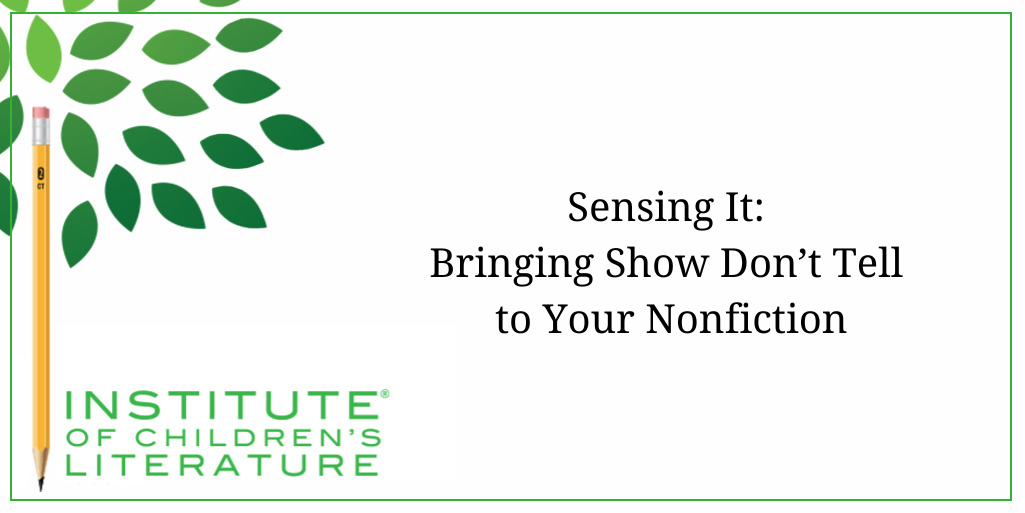
If there is one mantra fiction writers hear all the time, it’s “show don’t tell,” which means writing in the moment and digging into sensory detail rather than information dumping on readers. Actually, it means more than that, but let’s go with that for now.
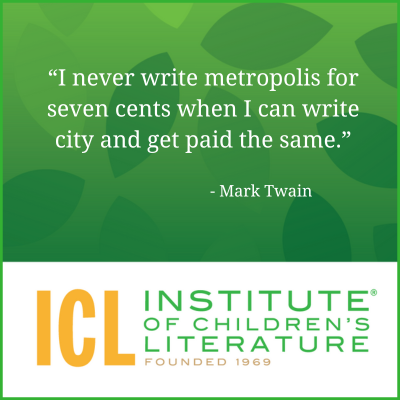
As you might imagine, this is easier in some forms of nonfiction than others. In narrative nonfiction, the nonfiction that tells a story, it would be a sad book or article indeed if the writer did not employ “show don’t tell” as often as possible. There will still be information that is flatly told, but sensory detail will draw the reader in and make the moments of recounting the real-life events more real and immediate for the reader. Let’s look at an example from The Mona Lisa Vanishes by Nicholas Day:
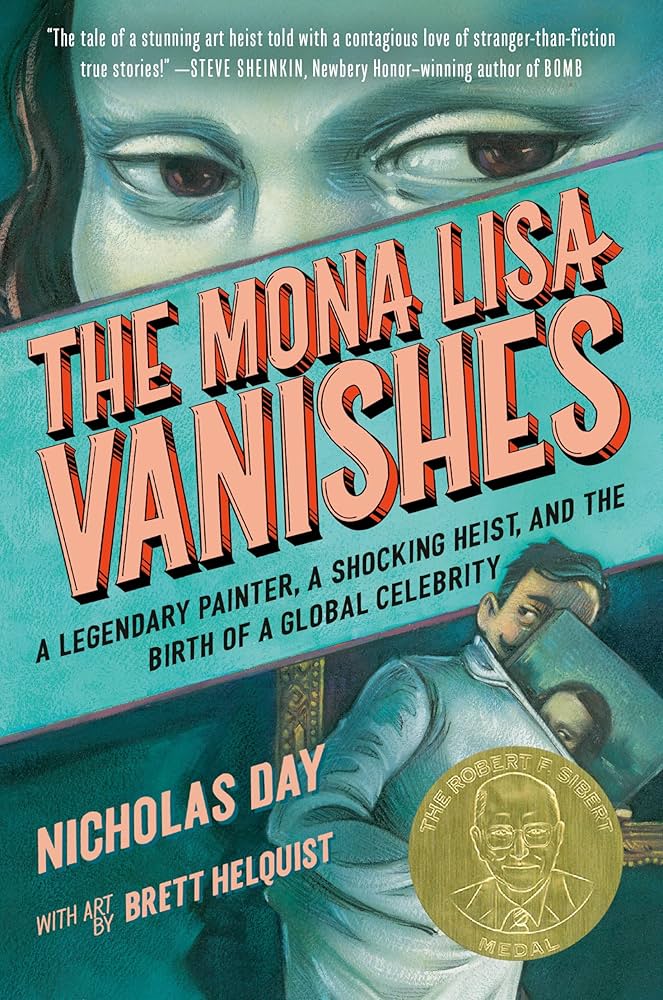
In the empty, enormous rooms of the Louvre, the footsteps must have echoed.”
This excerpt is set in a specific moment of time. We know when it happened because the writer flatly tells us. It was Monday, August 21, 1911. After giving us that flat bit of telling, the writer then immediately brings in a bit of sensory detail in the echoing footsteps of the Louvre guards. This detail makes the moment feel more real and immediate. It also helps us feel the emotion inherent in hiding. The man in the excerpt is hiding from the guards in a closet. We’re told that, but the inclusion of sensory detail makes it feel real.
Here is another excerpt from a narrative nonfiction book, this one is an account of the experiences of the Thai Soccer Team that was trapped in a cave and how they were rescued. The recounting in All Thirteen, The Incredible Cave Rescue of the Thai Boys Soccer Team is full of sensory detail. Author Christina Soontornvat weaves these details with specific facts:
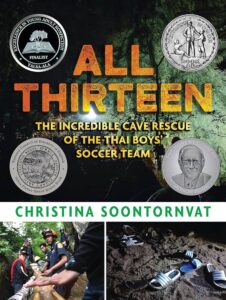
As you may have noticed in the quote from All Thirteen, the author is quick to use analogy, specific detail, and simile. These choices can be a kind of showing as well. It provides information readers can use to see the details of the nonfiction story in their minds. Soontornvat not only gives us the dimensions of the chamber in the cave, she adds the detail that it is big enough to hold a 747 jet for scale. She also uses a simile where she compares the stalactites to dragon teeth. This choice both brings in an element of threat (to foreshadow what is to come) and makes the image clearer with the use of something readers can picture.
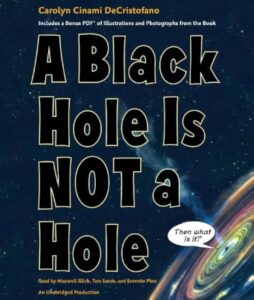
“Have you ever pulled out a sink stopper and watched water swirl down the drain? Spirals of water flow toward the center. You’ve made a small whirlpool.”
Directly after creating this specific bit of detail, the author goes on to explain the ways black holes are like this spiraling whirlpool. This analogy isn’t perfect, of course. Analogies rarely are. But the author is careful not to push it too far, so the reader isn’t led to false assumptions.
Biographies are especially great places to use specific moments and specific detail because it is in recreated moments from the life of the biography subject that a reader truly feels as if the subject is a real, living, complex person. This can work in a book for very young readers or a book for older readers.
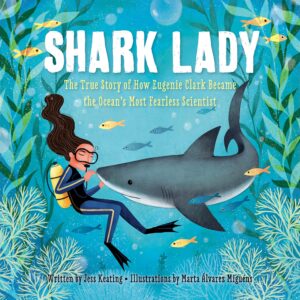
“It was Saturday, and Eugenie wanted to stay at the aquarium forever. She wanted to smell the damp, salty air and stare at the glittery rainbow of fish. She wanted to keep watching her favorite animals…the sharks.”
Notice how the author goes beyond visuals in the short moment. She reminds us of the smell of large aquariums, that damp, salty scent that is similar to, but not exactly the same as, the sea. Remember that Soontornvat called upon the sense of smell in the previous excerpt as well when she noted that the boys would smell wet, mossy limestone. Scent is an evocative sense and deeply linked with our emotional memory, so it’s a good sense to call upon when possible.
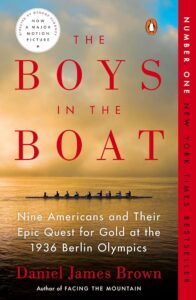
“When Judy opened the door and ushered me into her cozy living room, Joe was stretched out in a recliner with his feet up, all six foot three of him. He had a thin white beard, and his eyes were puffy. An oxygen tank stood nearby. Rain flecked a window that looked out into the wet woods. A fire was popping and hissing in the woodstove. Jazz tunes from the 1930s and 1940s were playing quietly on the stereo.”
All of these very specific sensory details help the reader connect with the author’s experience during the recalled moments. These kinds of connections make the writing more engaging and ensure the reader is ready to dedicate time and emotion to the reading of this nonfiction story.
Let’s look at examples from three books for young readers. These books are not narrative nonfiction. Instead, they are designed to share specific information, though each does it in unique ways:
“Patter. Splatter. What is that sound? Rain is rain unless…on the ground.”
Water is Water: A Book About the Water Cycle by Miranda Paul
“When you’re walking along the city streets there’s always so much to see and hear. Cars and buses roar past and honk loudly. People chatter and shout to each other as they go to work and do their shopping. The store windows are colorful and bright.”
The Street Beneath My Feet by Charlotte Guillain
“A bee is an insect. Like all insects, it has six legs. It has a body made up of three parts. It has two pairs of wings. Buzz, buzz, buzz! A bumblebee beats its wings so fast it makes a buzzing sound.”
Amazing Bees by Sue Unstead
Notice that each of these authors uses specifics and sensory detail to grab the reader’s attention. Because these books are for quite young readers, the authors also pay special attention to the sound details and the way the book will sound when read aloud. The water cycle book focuses on the sound of the rain, while the book about bees zeros in on the sound of a bumble bee’s wings. In The Street Beneath My Feet, the author brings in common street sounds to make the reader connect with the opening of the story, then she draws them deeper and deeper underground to look at what is happening below the surface where the children encounter far less familiar things.
All this use of specific detail demands meticulous research and creativity from the author. It requires the author to think like a reader to come up with the most compelling sensory details and the most effective ways to impart them. It can be challenging, but it results in books that are a joy to read, books that linger long after the last page is turned, and in several of these examples, books that win awards—which makes it most definitely worth the effort.
With over 100 books in publication, Jan Fields writes both chapter books for children and mystery novels for adults. She’s also known for a variety of experiences teaching writing, from one session SCBWI events to lengthier Highlights Foundation workshops to these blog posts for the Institute of Children’s Literature. As a former ICL instructor, Jan enjoys equipping writers for success in whatever way she can.

What does show don’t tell mean when it comes to nonfiction? Jan Fields shares examples of using sensory details to bring true stories to life for the readers.

Part of writing children’s books that can be used in a school setting lies in meeting the needs of the reader. Here are 4 steps to improve readability.

Schools are crammed full of reading material. Who is doing all that writing for the classroom? What’s different about the educational market? Let’s find out.
1000 N. West Street #1200, Wilmington, DE 19801
© 2024 Direct Learning Systems, Inc. All rights reserved.

1000 N. West Street #1200, Wilmington, DE 19801
© 2024 Direct Learning Systems, Inc. All rights reserved.

1000 N. West Street #1200, Wilmington, DE 19801
©2024 Direct Learning Systems, Inc. All rights reserved. Privacy Policy.